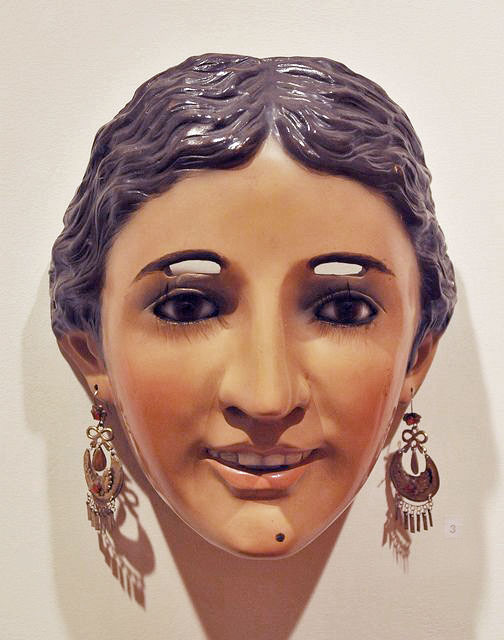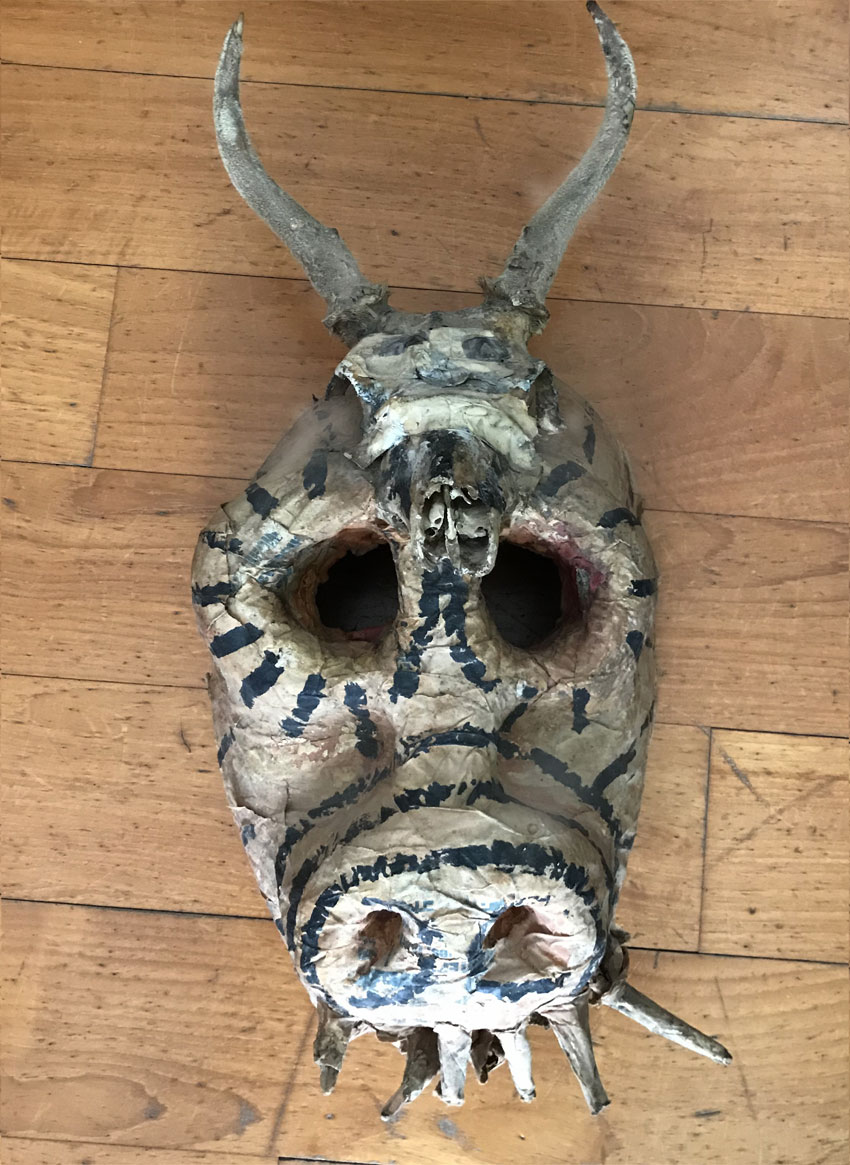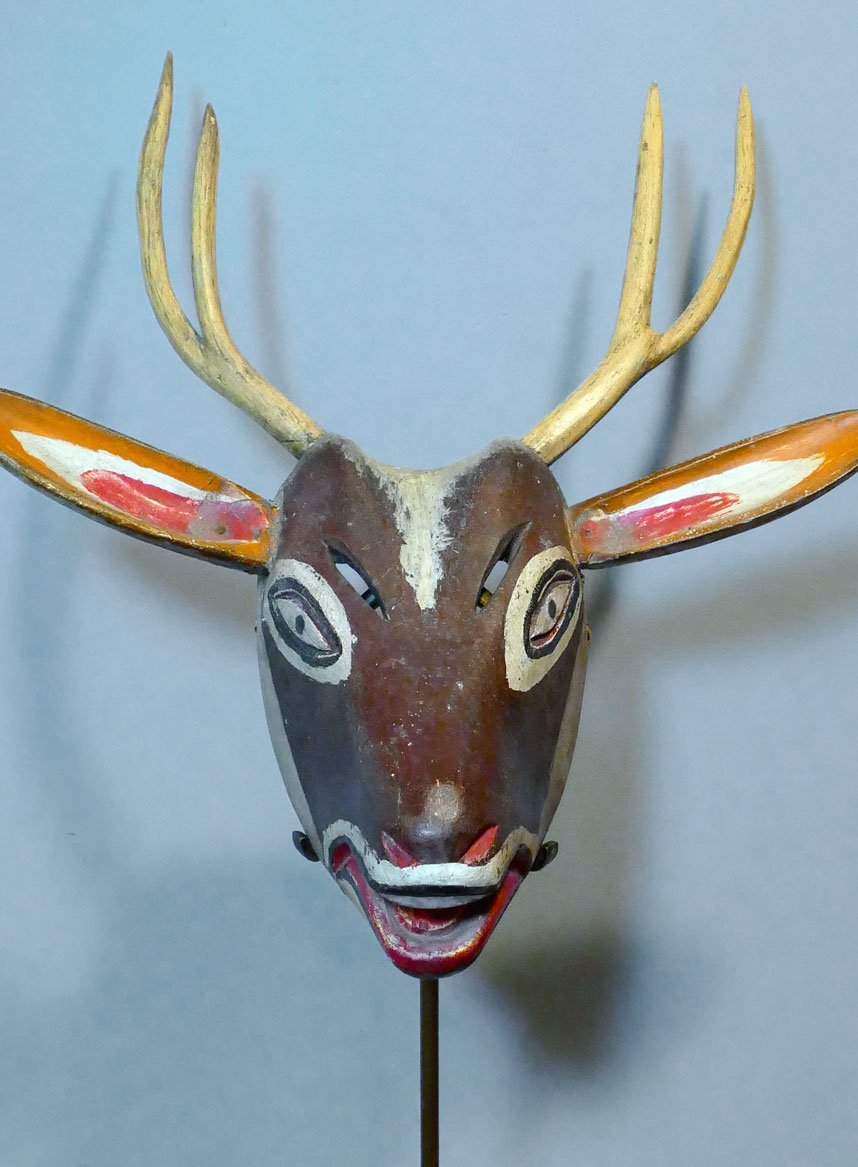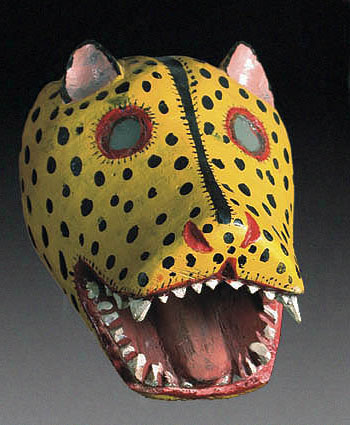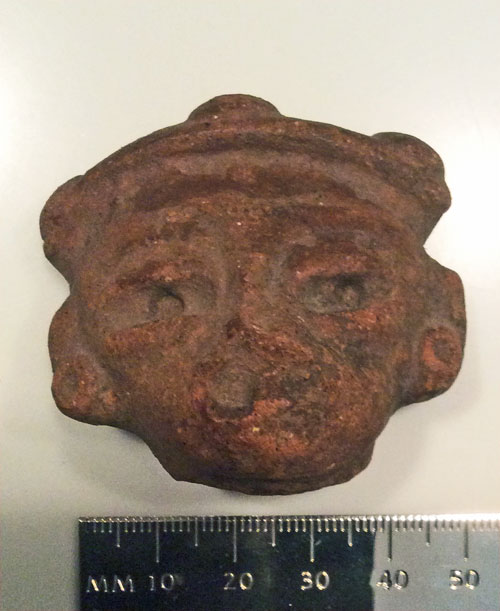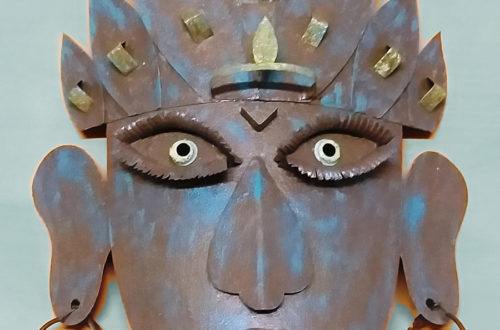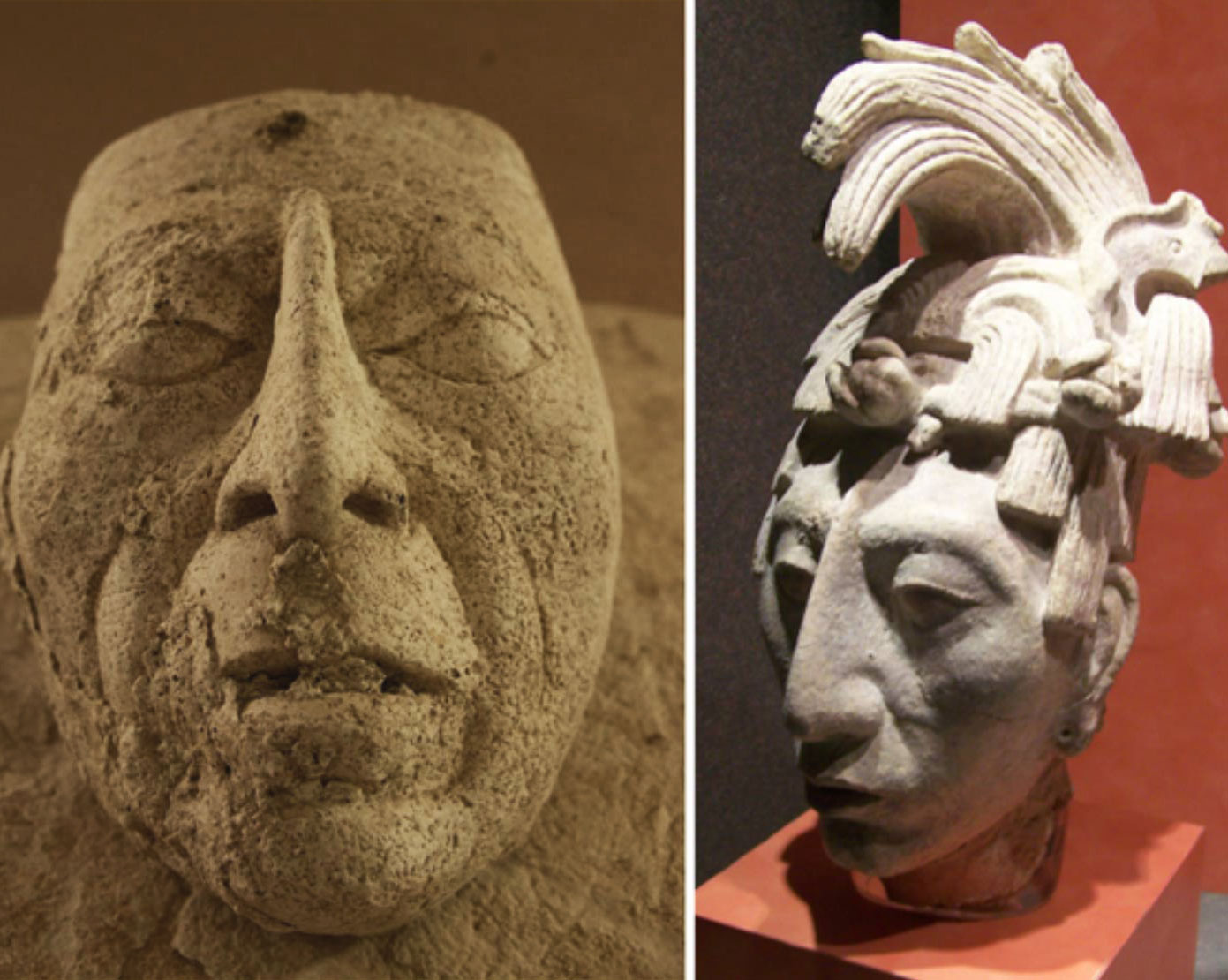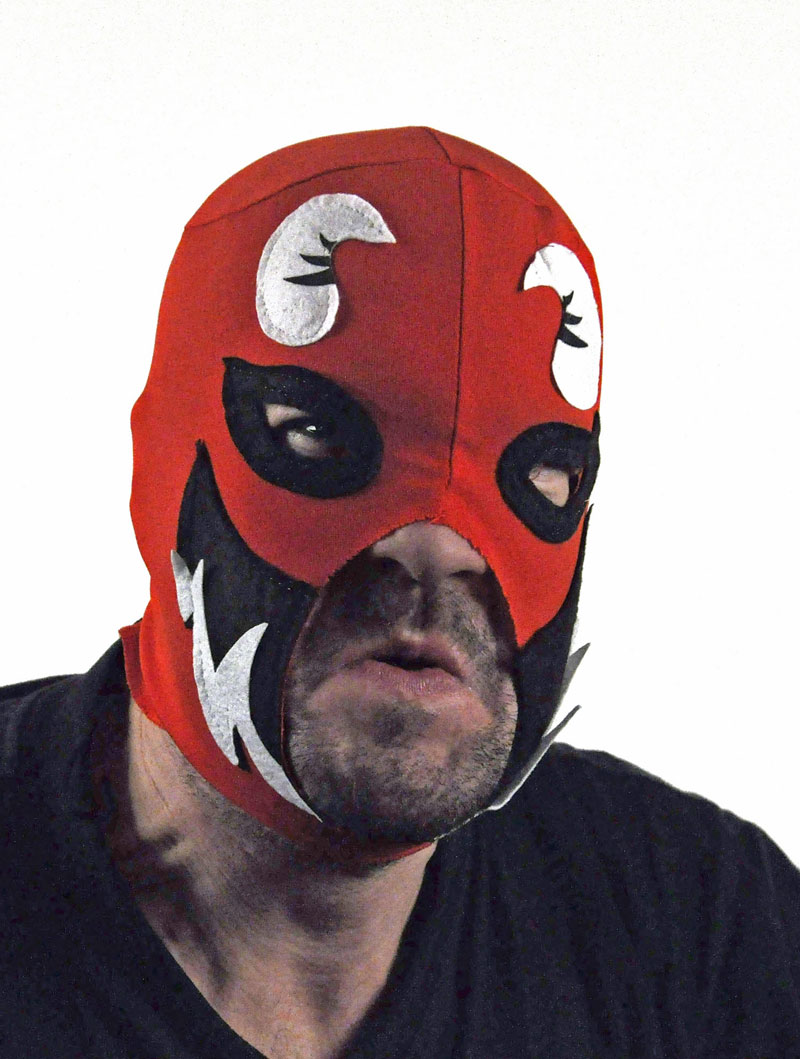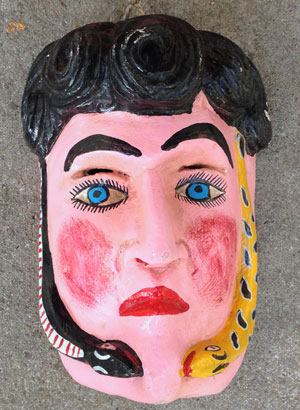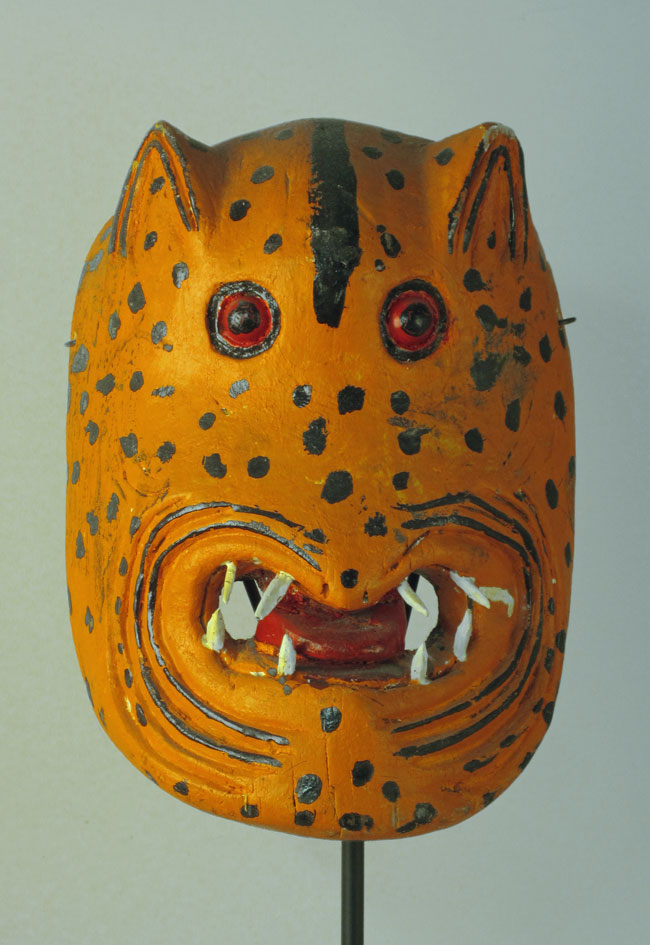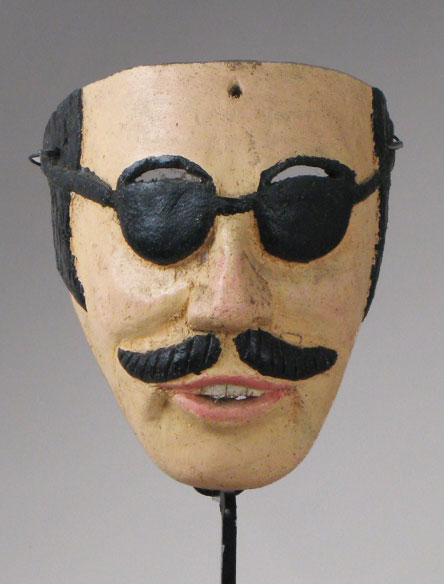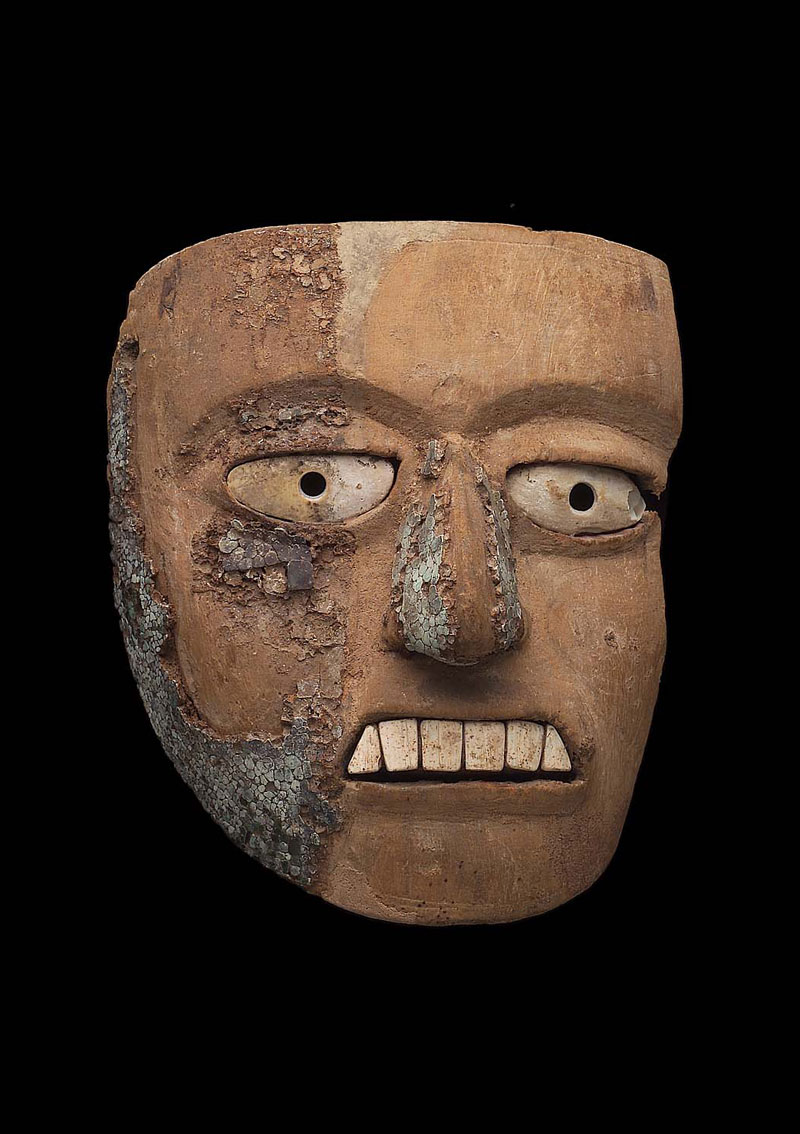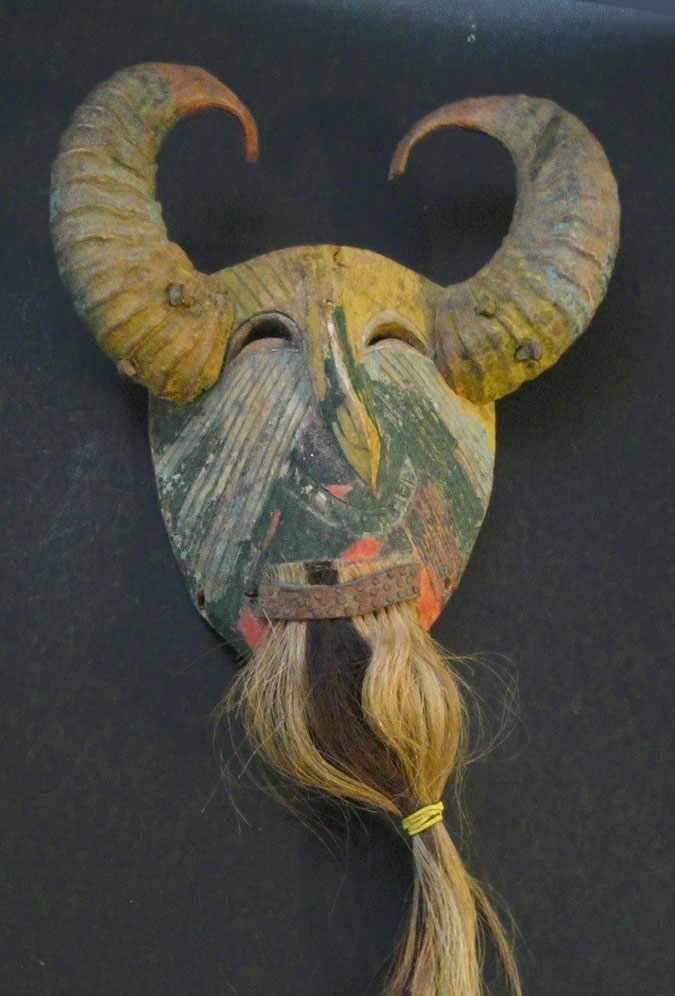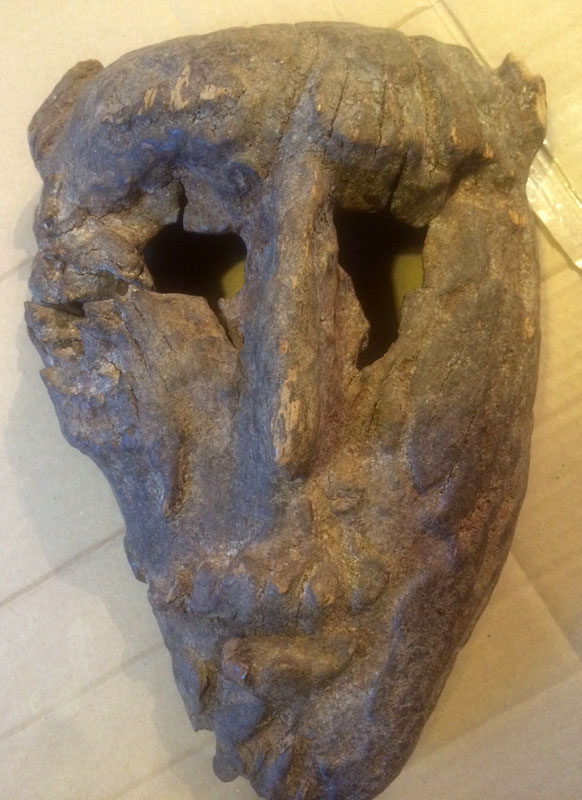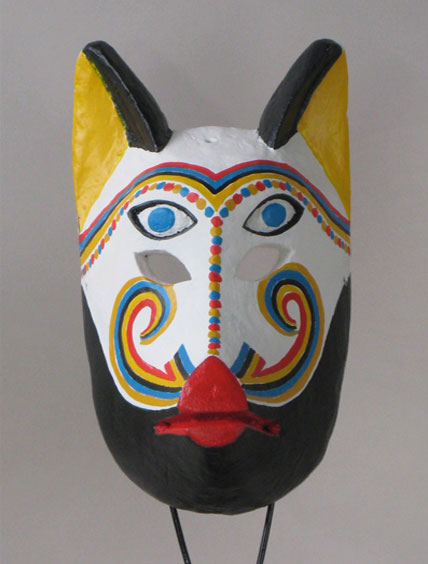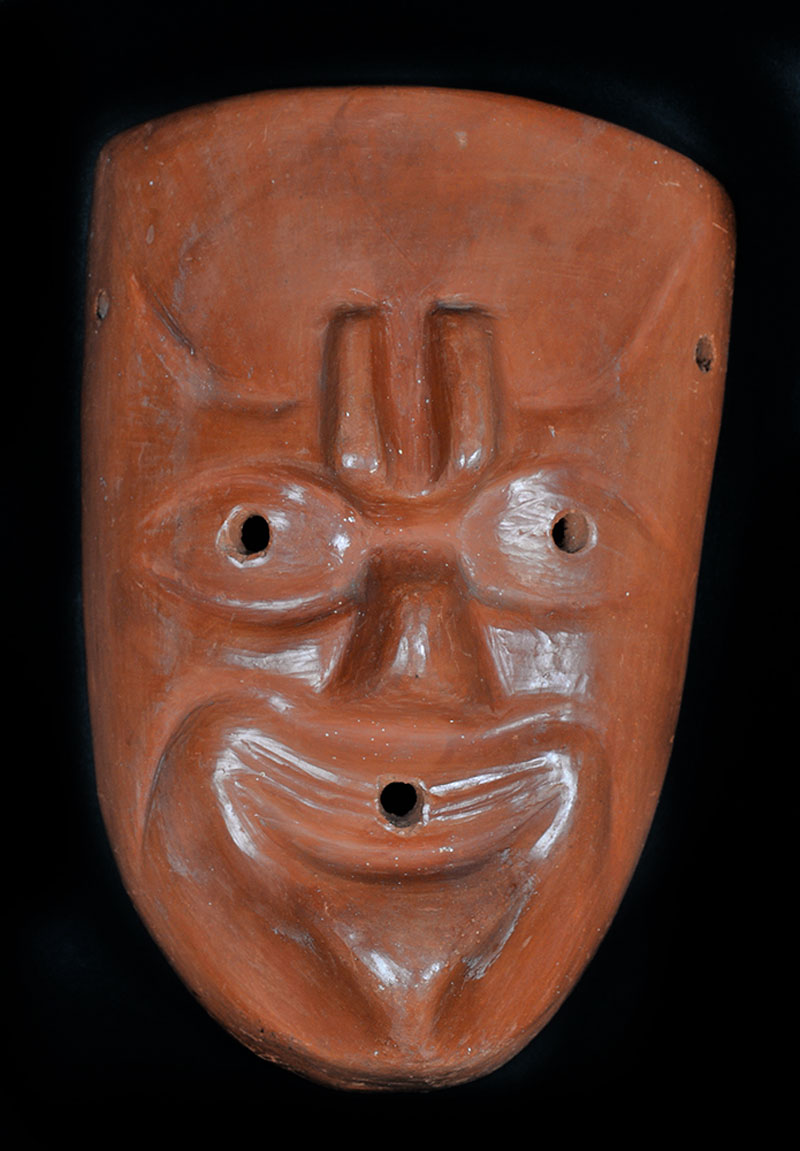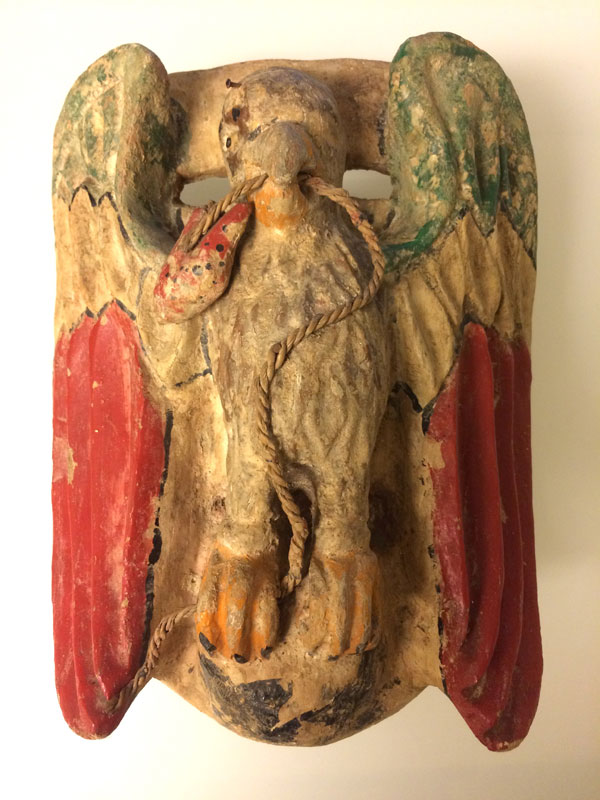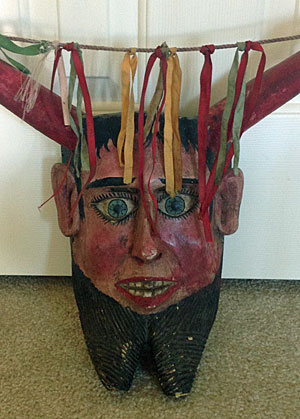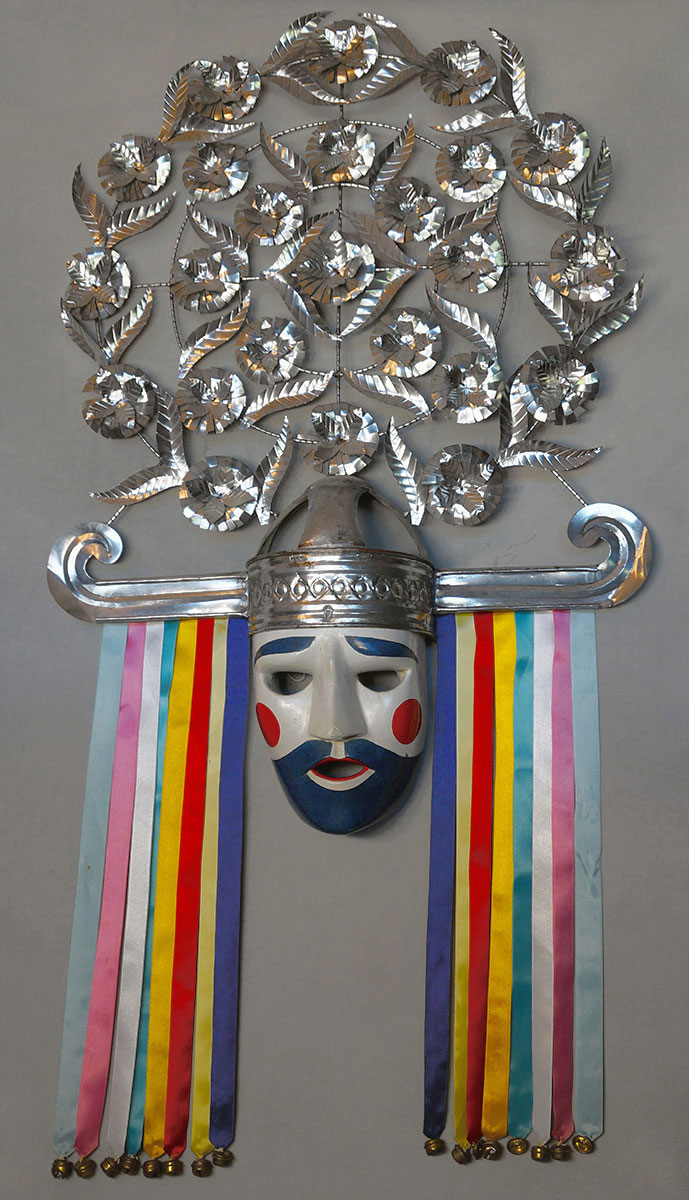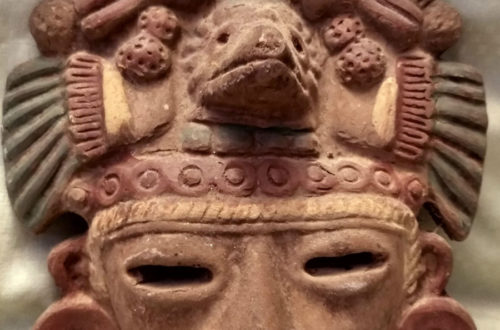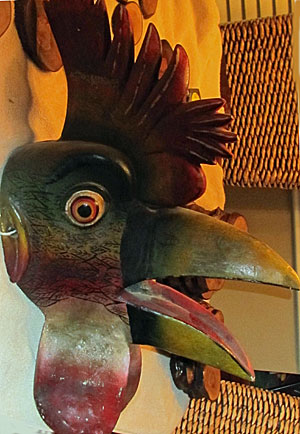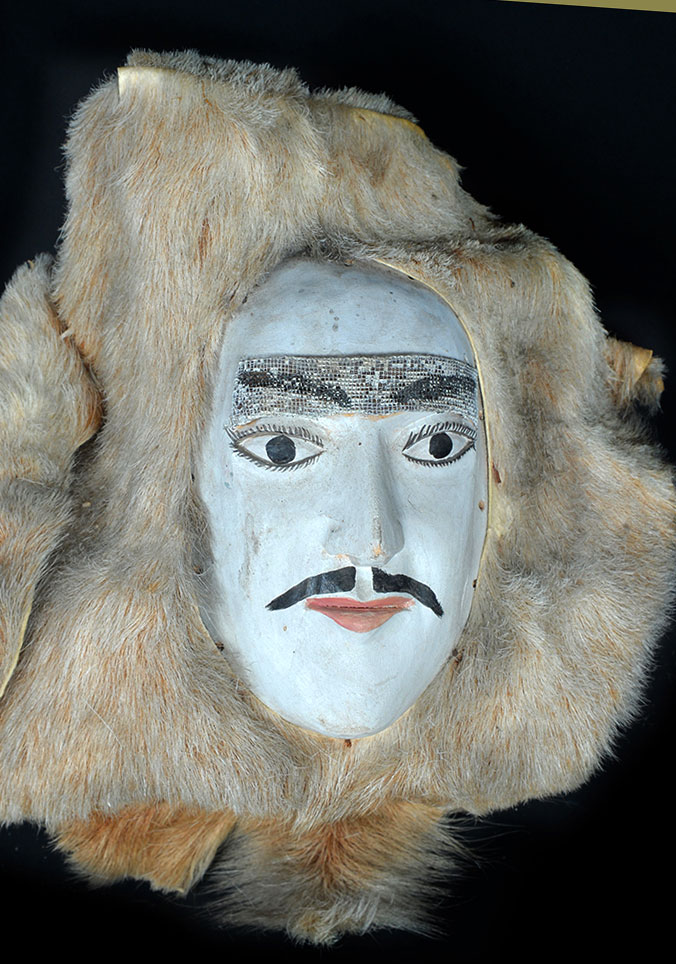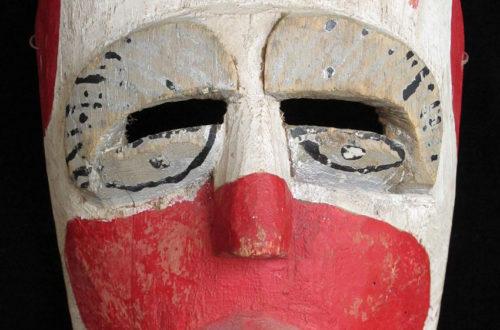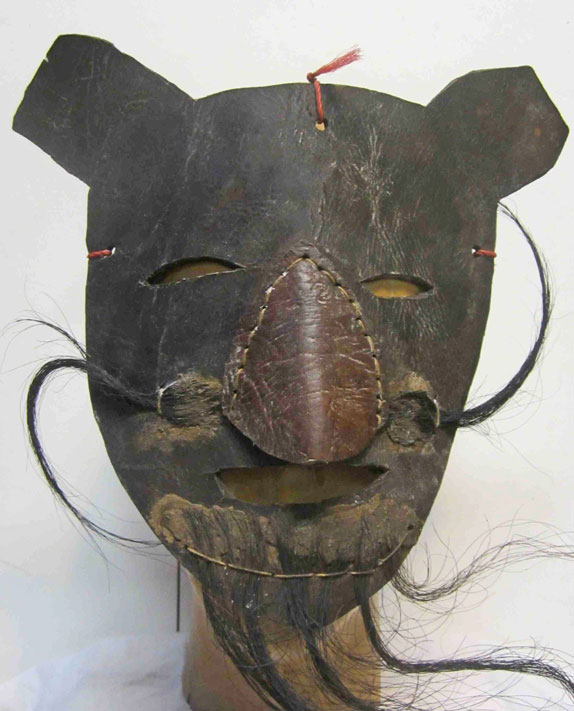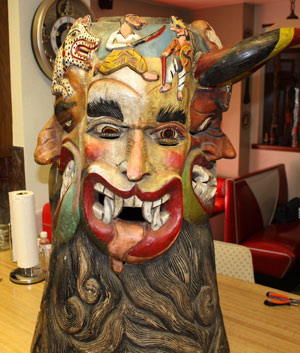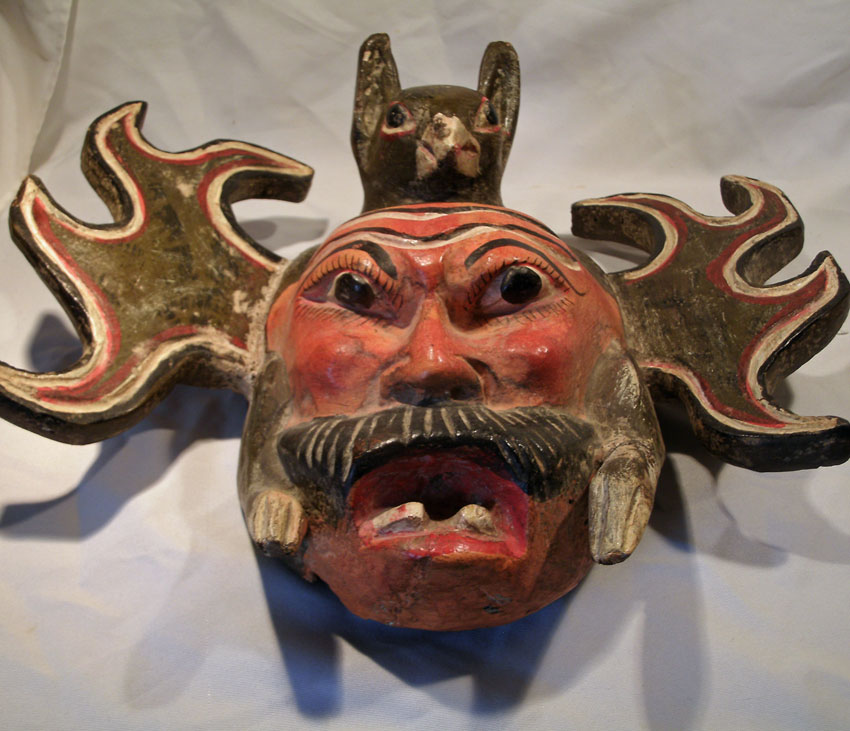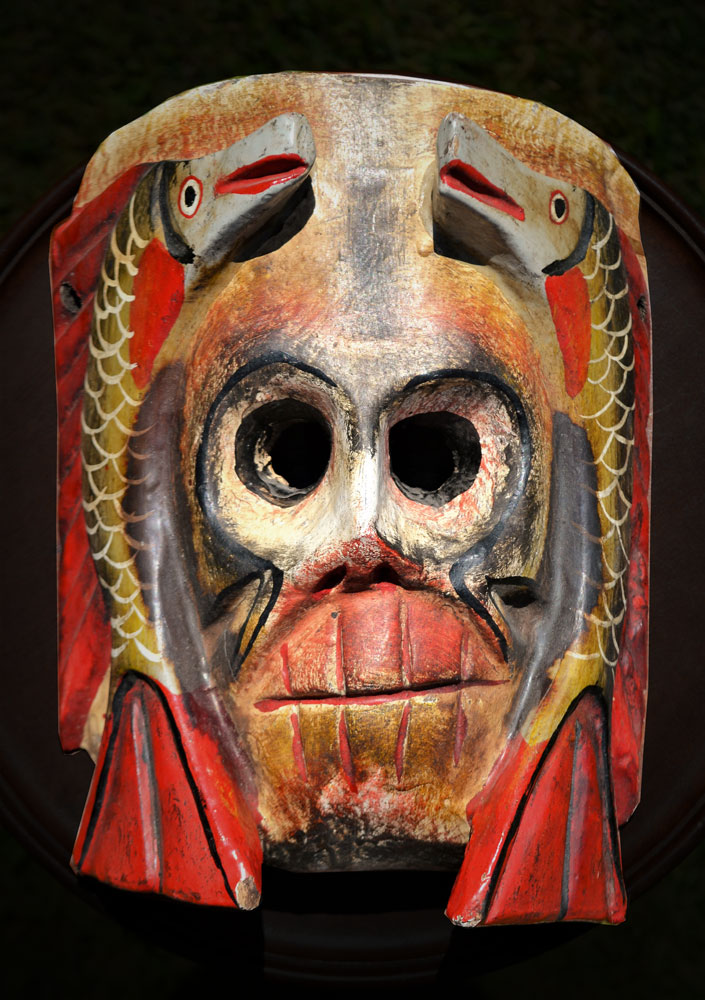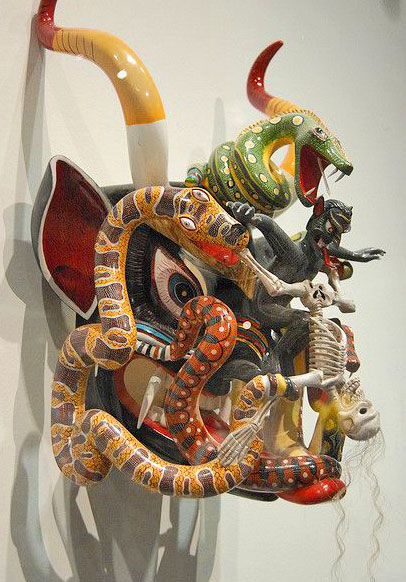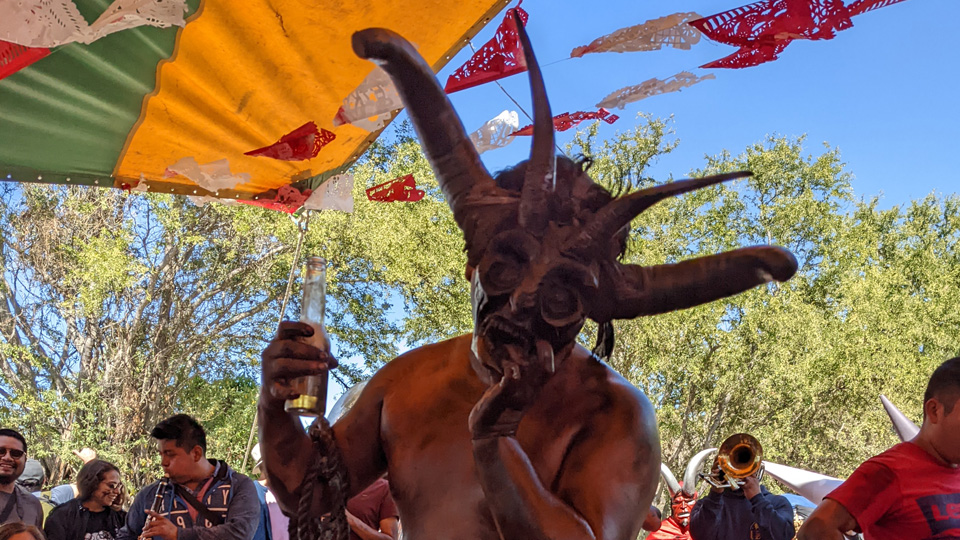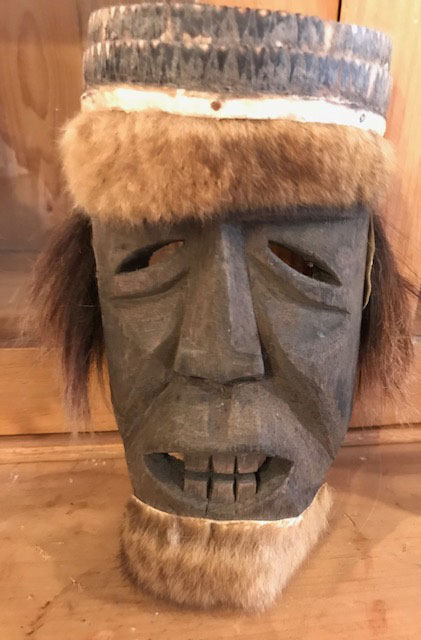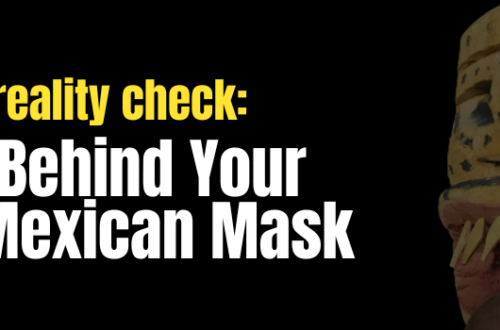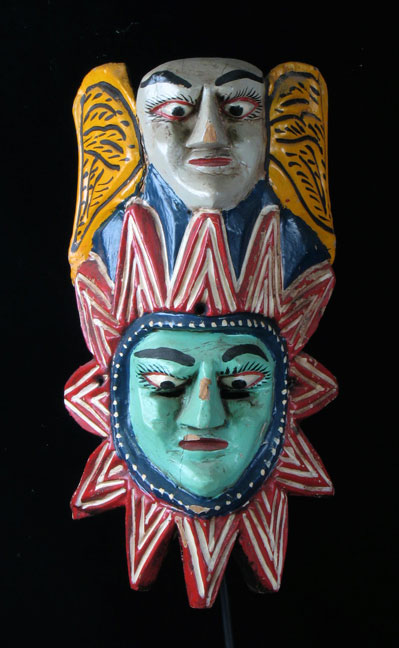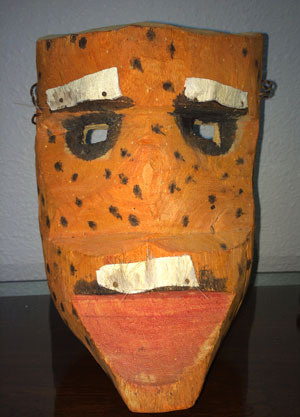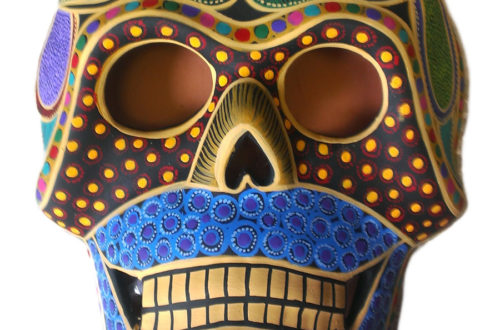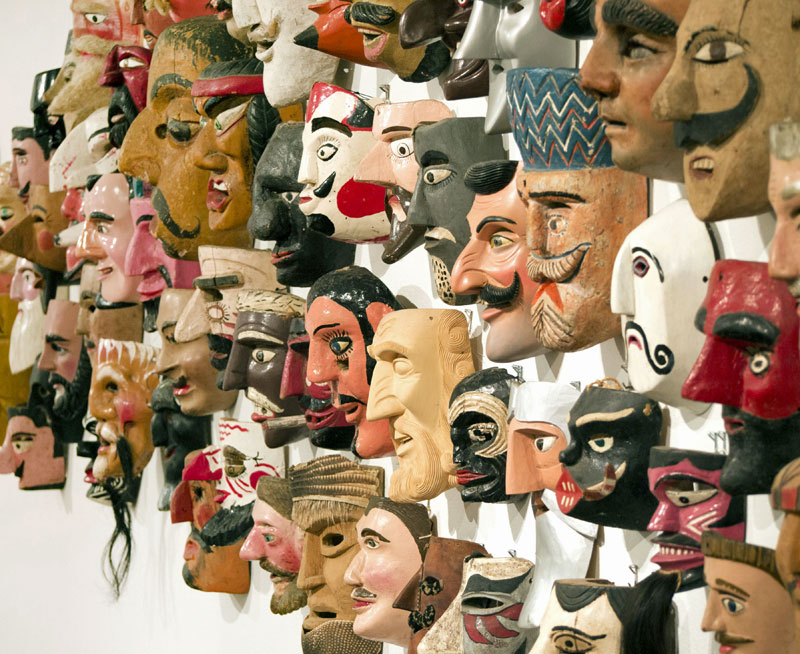This high quality mask of a woman belongs to the Ruth Lechuga collection. You can also see it on page 37 of her famous book, Mask Arts of Mexico. It is a carnival mask from Papalotla,Tlaxcala, Mexico. The maker, Enrique Mendez Juarez, is a well trained professional santero who also carves statues for churches. His masks cost more than most Mexicans can afford. Carefully carved out of wood and painted, the eyes are glass surrounded with false eyelashes.
-
-
Mexican deer mask
Q: I got this deer mask online where it was described as African, however I’m fairly certain it’s Mexican. The main portion is carved wood with attached ears and antlers. The antlers appear to be modified tree branches. I’d like to know your opinion. Dan, 1304 A: You’re right, and I think you picked out a good one. This deer mask is well made and in good condition. Deer characters show up in the dances of several different ethnic groups and locations in Mexico. You should be able to pin this down, but it might take some effort. How much did you pay for it?
-
Mexican Lucha Libre masks
This website is mostly about ethnographic masks that are used in celebration and ceremony. With Lucha Libre we are talking about something much different, and quite authentic. Caveat: the masks you see here are made for sale to fans who can’t spend a lot of money. The ones worn by the wrestlers are more expensive and can withstand lots of abuse. Masked wrestling is unique to Mexico. If you get to Mexico City… CMLL runs shows every Tuesday, Friday and Sunday night in Arena Mexico. CMLL always runs shows on those days, but they don’t announce who will be wrestling on those shows more than a week in advance. The shows are inexpensive,…
-
History of Mexican masks
The first photo is a rare example of a wood mask used by Aztecs or some other indigenous tribe before the Spanish arrived in what is now Mexico. The few that exist today would be 500 years old. This one could also be Mixtec, is 6 5/8 inches tall, and is decorated with turquoise, black stone, shell and mother of pearl. From the Museum of Fine Art, Boston. Then I looked for some that display the Spanish influence that starts in the 1500s. The oldest one is from Northern Guatemala and the other– Southern Mexico. If you look at lots of Mexican masks, as I have, you will see that…
-
Mexican clay mask? Decorative or not?
Q: Yet another mystery out of the same batch. This one is large enough for a normal human face. I’ve seen clay masks used in ceremonies before, but it’s rare. Normally, when I see a clay mask, I assume it’s a decorative tourist mask. In this case, I am hesitating, because it seems like it’s not really attractive enough to be a tourist mask. Do you have any idea what it is? Aaron, 1253 A: I agree this will not appeal to most tourists. And don’t rule out Peru or other countries, they make a lot of terracotta masks, as well as Mexico. I have not seen one that looks…
-
Fancy Mexican mask
This mask is gorgeous. It was made for someone important (and well-to-do) to wear at a big ceremony. In my notes I wrote it was made by the famous mask maker, Victoriano Salgado, who is from Uruapan, Michoacan. One of my collector friends sent the photo to me several years ago. The wooden part of the mask would be adult human in size.
-
Holy Week mask from NW Mexico
Q: I recently won an auction with about 20 masks, most of which were tourist junk, but a few of which are interesting. Most seem to be from Mexico or Nepal. In this group are several genuine mysteries that have stumped me, and I was hoping for your help with them. Here is the first one. It’s quite old, probably dating to the 1970s, judging by the extremely dry leather of the pelt. It looks to me like coyote pelt, which suggests it could be a fariseo mask from the Yaqui or Mayo people, but I’ve never seen one looking quite like this. What’s your take on it? Aaron, 1247…
-
Unusual Mexican decorative mask
Q: I have been trying to ID this mask for some time. It was given to me back in the 70’s. So far, I have been told it could be a pre-revolution Chinese mask, an ancient feng shui and a possibleTibetian. Could I please draw on your expertise to finally confirm the mask’s origin. It is 13 inches long and 17 inches wide across the wing tips, with the face being 7 inches wide. Pete, 1246 A: I’ve never seen this particular character before, but I do recognize it as a Mexican decorative– the only form of tourist mask I feel is good enough to interest collectors. These artistic carvings…
-
Armadillo mask from Oaxaca, Mexico
Q: Here are the masks. They were purchased at a garage sale in British Columbia, Canada, but they don’t look like local native art at all. The wood and materials used are unfamiliar to me, particularly the shell used on the top & bottom of one. The fur, hair & whiskers seem to be real but I’m not sure of their origin. There were about 8 in a box at a “collectibles” garage sale & when I asked about the origin they only knew that they came from a man who had collected them. I have tried to ID the currency but can’t. Since they have price tags they may…
-
Chivo mask from Hidalgo, Mexico
Q: This one has me a bit confused. Would love your commentary. Twisted nose makes me think Mexican and off the top of my head I can only think of tourist pieces that depict this twisted nose. However, the real goat horns, heavy wood, patina all scream Guatemalan to me and ethnic use. The horn tips have holes evidencing that this once had bells or the likes attached to it… that too makes me think more in the direction of Mexican than Guatemalan, although fitting for both. 51% leaning in the direction of Mexican…given the lines on the front, color choices and the nose again. Nate, 1240 A: This is…
